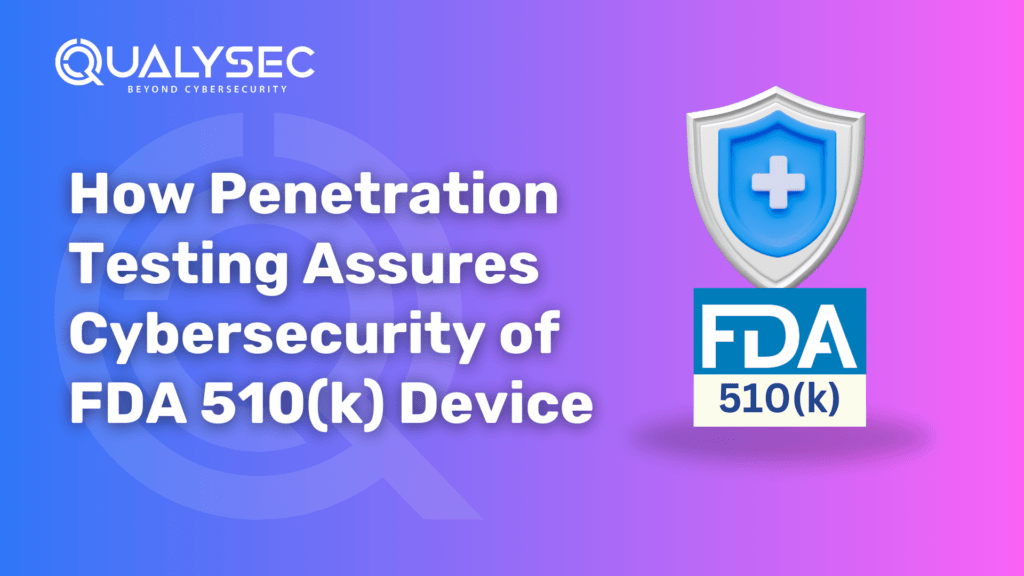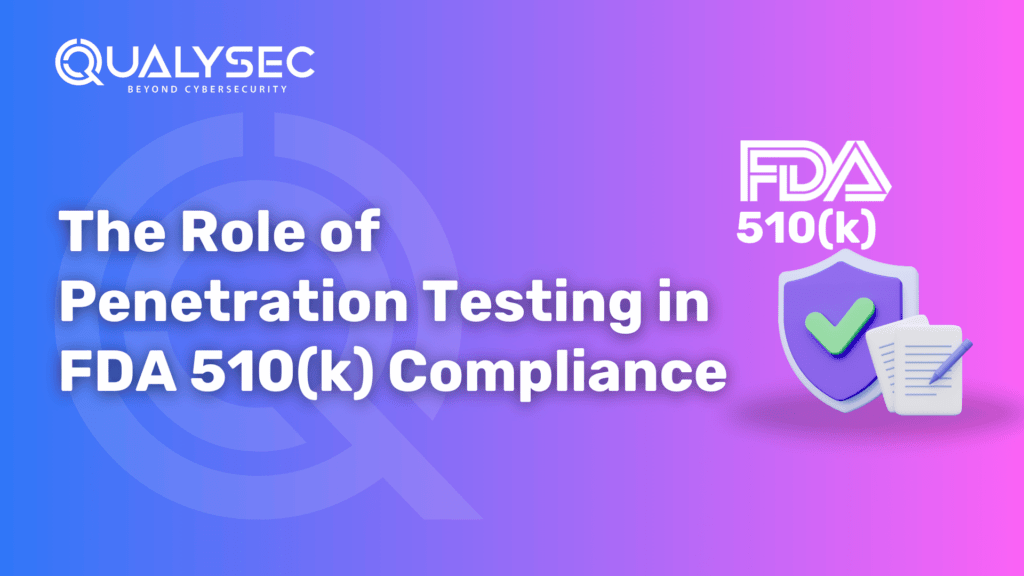How Penetration Testing Assures Cybersecurity of FDA 510(k) Devices
The medical device industry is booming with innovation in connected healthcare, artificial intelligence, and remote patient monitoring. However, the same innovation creates cybersecurity risks that can jeopardize patient safety, data privacy, and regulatory compliance. According to Fortune Business Insights, 2023, the global medical device market is estimated to reach $799 billion by 2030. It is a promising market for cyber threats. Cybersecurity of FDA 510(k) devices clearance increasingly includes penetration testing requirements as a protective measure of the safety and efficacy of newly invented medical devices compared to already approved ones. These are probably the best risks that can be explained with a penetration test, given that this is one of the proactive cybersecurity measures. The vulnerabilities are discovered before malicious actors can exploit them. This article shall delve into the role of penetration testing in ensuring FDA 510(k) devices‘ cybersecurity as an important component in its regulatory compliance and how manufacturers can adapt it in their security framework to ensure safe deliveries for products and patients. Understanding Cybersecurity Challenges in FDA 510(k) Devices The higher the interconnection level of the medical device with other devices and networks, the higher the cyber risk. Secure cybersecurity is vital for FDA medical device cybersecurity in protecting patient information and device functionality and keeping the broader healthcare system safe. Some common challenges are listed below: Network Vulnerabilities: Most medical devices have been communicating with each other and with the internet through Wi-Fi, Bluetooth, or cloud-based platforms. That way, most of them present themselves to man-in-the-middle attacks, access without authorization, and data being intercepted. And unless proper encryptions, secure network setups, and authentication exist for them, they could easily be exposed to data leaks or alteration. FDA 510k medical device Software Exploits: The proprietary software on some medical devices exposes them to security loopholes. Malware and ransomware attacks can be on the device or remotely executed code. A hacker can take over the device’s functions or directly interfere with the patient’s care. Data Breaches: Medical devices store and transmit private information about patients, hence making them highly targeted for cyber crimes. A breach would lead to access to the healthcare records of the patient, unauthorized identity theft, plus violations regarding various laws that it is compliant with HIPPA. Insecure Third-Party Integration: Such integrations without close security controls may well expose even greater risks. Weakness in one can compromise the entire system. This is, as it were, regarding insecure third-party integrations. Most rely on third-party APIs, cloud services, and software components for operation. Lack of Continuous Security Testing: The various manufacturers guarantee that their gadgets are tested on security during design, but post-market release leaves the gadgets wide open to evolving threats. Without continuous security tests and updates, the devices will forever be left facing new exploits once discovered. Considering the factors above, penetration testing has remained a crucial part of cyber security for FDA 510(k) submission. What is Penetration Testing? Penetration testing is also referred to as ethical hacking. It is an active form of cybersecurity practice that simulates real-world cyberattacks on a system to determine and correct weaknesses before malicious hackers can exploit them. This might help manufacturers identify weak points in their devices and improve security measures. Key steps of penetration testing: Reconnaissance (Information Gathering): Security experts start by gathering information on the medical device and infrastructure. This step includes network analysis and finding software dependencies. Moreover, studying the hardware’s configuration allows a security expert to determine the potential attack vector. Scanning (Vulnerability Identification): The pen testers scan the entire device using automated scanning tools and manual techniques to identify various security vulnerabilities. In the process, they will probably discover weak authentication mechanisms, misconfigured settings, unpatched software, or poor data storage practices. Exploitation (Simulated Attacks): Experts experiment with these vulnerabilities to ascertain their severity levels and the potential damage that would result from exploitation. Exploiting a vulnerability involves actions such as bypassing authentication, injecting bad code, or interception of communication between the device and other external systems. Reporting (Documentation and Recommendations): After the testing process, experts will report their findings. The finding is documented in detail with security gaps, exploited vulnerabilities, and possible risks. Experts then make actionable recommendations that will mitigate the threat and enhance the security of the device. Remediation & Retesting (Enrichment of Security): The company accepts the proposed remediation and patching of the manufacturer’s security enhancements. After the manufacturer has remediated their weaknesses, a retest of the remediations is then conducted with testing for successful repairs and avoidance of newly found vulnerabilities. Latest Penetration Testing Report Download Type of Penetration Testing According to the levels of access of the testers, there are different types of pen testing: Black-box Testing: The tester knows the operations that happen inside the actual mechanism of a device that, in other words, goes for the mode of simulation about an outside threat. White-box Testing: The testers have a perfect understanding of that system and will include how much the knowledge falls on their disposal from source codes down to even documented architectures Grey-box Testing: The tester understands portions of this system, balancing the advantages of both black-box and white-box testing. This integration of penetration testing in a cybersecurity plan for FDA 510k medical devices ensures that security flaws are identified and eradicated before they become actual threats to real threats. That should translate into safeguarding information at the patient end, safe operational functionality, and regulatory compliance on the safety stand. How penetration testing strengthens security for FDA 510(k) devices 1. Detection of security vulnerability; mitigation Penetration testing offers manufacturers an opportunity to find and address security vulnerabilities before a hacker does so. The most common vulnerabilities discovered in medical devices include hardcoded passwords, unencrypted data transmission, and insecure firmware updates. 2. Compliance with FDA Cybersecurity Guidelines The FDA has also released premarket and postmarket guidance on the cybersecurity aspects of medical devices, such as threat






